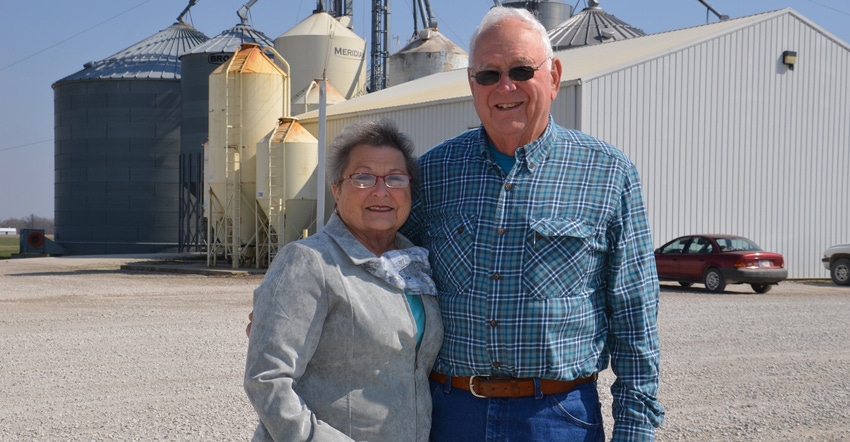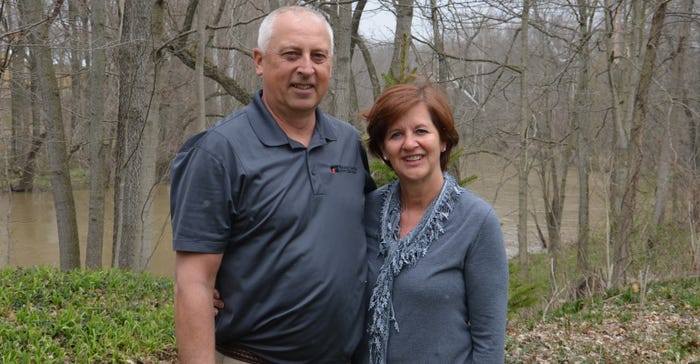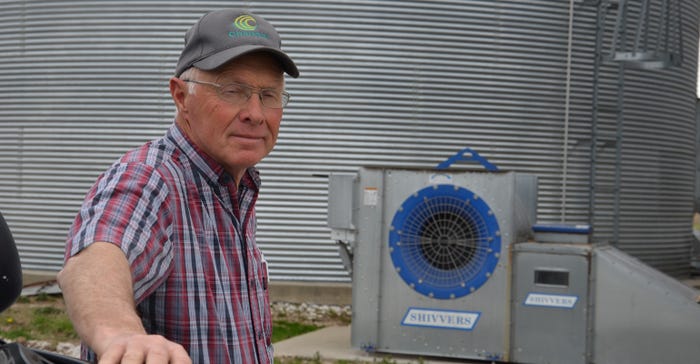
Jim Mintert asked tough questions when the new class of Master Farmers took the stage following the awards ceremony during the Indiana Farm Management Tour. He wanted to know what changes in agriculture had made the biggest impact during their careers, and what key challenges might lie ahead.
Mintert is a Purdue University Extension ag economist and director of the Center for Commercial Agriculture. The 2018 Master Farmers are: Barry Bishop, Campbellsburg; Jim Farris, Vincennes; Carl and Sally Swinford, Hillsdale; and Mark and Christine York, Roann.
Mintert: This is the 50th anniversary of the modern Master Farmer program in Indiana. Some of you go back that far in farming; others don’t. Reach back as far as you can. What are the biggest changes you’ve seen in farming and agriculture?
Carl Swinford: Everything has changed. Nothing stays the same. We started with a two-row corn planter back then, and now we have a 24-row planter. There is change constantly. We won’t be doing the same things next year which we did this year.
Sally Swinford: I see change as a good thing. Like Carl, I see it happening every year. In fact, it happens every day.
Farris: There are three changes that stand out. First, technology has advanced so much, especially in the last 10 years. Second, there have been tremendous advances in plant genetics. I have really noticed that as a trend since I graduated from Purdue in 1984. Third, weather patterns have changed. There are more extremes, and it makes farming more challenging.
 WEATHER PATTERNS SHIFT: More extremes in weather is a change Jim Farris finds especially challenging.
WEATHER PATTERNS SHIFT: More extremes in weather is a change Jim Farris finds especially challenging.

Bishop: Change is all around. My nephew has put up new buildings to raise turkeys on contract near us. Those weren’t around years ago. On my own farm, I started out with a three-bottom plow. Now we no-till. The truth is, farming is changing all the time, and we try to ride the wave.
Christine York: There is much more emphasis on paying attention to the acceptance of what we do by the public today. We operate a wean-to-finish hog operation, raising pigs on contract. We must try to let the public know why we do what we do.
Mark York: Ag advocacy is much more important today than ever before. We need to be engaged as producers at the state and federal level. If you’re not at the table as producers, you’re going to get beaten up when it comes to policies and regulations. We talk about how many people we serve with pork instead of how many pigs we produce per year. We affect 135,000 people because we raise enough pork for that many people.
 PUBLIC PERCEPTION: What consumers think matters a great deal today, note Mark and Christine York.
PUBLIC PERCEPTION: What consumers think matters a great deal today, note Mark and Christine York.

Mintert: What I hear you guys saying is that there has been lots of change in 50 years. At one time we could take it for granted that the public would support agriculture. Today we must make sure people know what we do and why we do it.
What are the biggest challenges facing farmers and agriculture going forward?
Farris: First, as the percentage of people working in agriculture goes down, it’s important to tell our story. Second, we need to be aware of changing weather patterns. Knox County, where we live, is surrounded by 35 miles of rivers. We don’t have control of what happens with the amount of water coming down those rivers today in many cases.
Bishop: Having land to farm is still the key for an individual. It’s becoming tougher to keep a land base together today. At the same time, we need more young people to come into agriculture. That’s our challenge.
 DIFFERENT TILLAGE METHODS: Barry Bishop says he gets more out of his rolling farmland today because he no-tills and uses conservation practices where necessary.
DIFFERENT TILLAGE METHODS: Barry Bishop says he gets more out of his rolling farmland today because he no-tills and uses conservation practices where necessary.

Christine York: Understanding the public perception of what we do is important. Education is the key.
Mark York: Our challenge is to tell our story. It’s a good story. Producers are only 1.5% of the population of this country, and we are feeding the country and the world.
Carl Swinford: We need to make sure people who don’t live on the farm learn where food comes from. It doesn’t just come from the grocery store. We have a duty to tell our story.
Sally Swinford: Our job is to leave our land better than we found it for the future generations. At the same time, we need to educate people as to where their food comes from and how it gets to their table every day.
Mintert: I hear you saying that we need more young people in agriculture, and that’s a major challenge. I also hear you saying that farmers need to play a bigger role in developing a social contract with the public. Young people in agriculture have some challenges ahead of them.
About the Author(s)
You May Also Like




